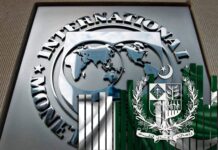KARACHI: The Covid-19 global recession is projected to be the deepest since World War II, according to a new World Bank report released on Monday.
According to the June 2020 Global Economic Prospects report, the Covid-19 recession will lead to a decline in global per capita gross domestic product (GDP) by 6.2pc. This is more than twice as deep as the global financial crisis of 2009, and the deepest global recession since 1945.
To recap, the global economy has experienced 14 global recessions since 1870: in 1876, 1885, 1893, 1908, 1914, 1917-21, 1930-32, 1938, 1945-46, 1975, 1982, 1991, 2009, and 2020.
In addition, this global recession is being acutely felt by many economies at the same time. The share of economies in recession is more than 90pc. To compare, the last time this many economies experienced a simultaneous contraction in per capita GDP was in 1870. Even in the Great Depression of 1930-32, only 85pc of countries experienced a recession together.
The per capita output growth for emerging markets and developing countries specifically will decline 3.6pc. These markets will also mark their first output contraction, by 2.5pc, in at least the past sixty years, while more developed countries will experience a 7pc in output.
“The speed and magnitude of growth forecast downgrades have also been unprecedented in both advanced economies and EMDEs even compared to those during the 2009 global recession,” the report noted.
GDP in South Asia is projected to contract by 2.7pc in 2020. According to the report, this is because pandemic mitigation measures will hinder consumption and services, and uncertainty about the course of the pandemic will chill private investment.
Pakistan’s output is expected to contract 2.6pc in fiscal year 2019/20, and 0.2pc in fiscal year 2020/21. India’s growth is estimated to have slowed to 4.2pc in fiscal year 2019/20, and is predicted to contract by 3.2pc in fiscal year 2020/21. Bangladesh’s figures for the same period stand at 1.6pc and 1pc, respectively.
“Business confidence in both manufacturing and services sectors have concomitantly fallen in economies like Pakistan,” the report noted.
It also highlighted that sales and production in the automobile sector in Pakistan had been hit especially hard. In addition, labor-intensive export sectors like textiles are expected to contract sharply and subsequently recover slowly.
However, there was one bright spot for Pakistan: a drop in oil prices. “The sharp decline in oil prices in 2020 could provide some support to the region, given sizable oil imports in India and Pakistan, and help cushion fiscal and current account balances,” the report noted.
However, that would have to be balanced with the expected drop in remittance inflows, which are expected to decline by about one-fifth in South Asia this year.
Overall, the report is not enthusiastic about Pakistan’s, or South Asia’s, ability to handle the pandemic’s adverse effects. The report noted that the pandemic will trigger a long-lasting rise in poverty. This is especially true considering that South Asia has a high share of workers employed in the informal sector.
“Inadequate infrastructure, such as existing major constraints to electricity access, can magnify the negative impacts of lockdowns via low productivity and poor service delivery,” said the report.
In addition, a continuation of financial market disruptions globally could add pressure to vulnerable balance sheets of the financial sectors in South Asia.
























